10 Interesting Things About Glaciers
NASA keeps a close eye on glaciers
NASA satellites and aircraft are constantly above Earth, and they're especially monitoring icy regions. For example, the IceBridge mission uses instruments aboard special airplanes to measure yearly changes in the thickness of glaciers and other ice. And data collected by the GRACE satellite helps scientists understand the relationship between melting glaciers and sea level rise.
Really old snow can form a glacier.
Glaciers are huge, thick masses of ice. They form when lots of snow falls in one location for many years. Over time–decades or centuries–the snow on the bottom gets squished down by the weight of falling new snow. This compressed snow becomes ice, forming a glacier.
Glaciers are really, really big.
Glaciers can grow to be dozens or even hundreds of miles long. The world's largest glacier is the Lambert-Fisher Glacier in Antarctica. It is approximately 250 miles (400 kilometers) long and 60 miles (100 kilometers) wide. Even small glaciers are about the size of a football field!
Glaciers hold a lot of water.
Fresh water is important for lots of living things on Earth. Glaciers and ice sheets–layers of ice that cover a large region of land–hold about 69 percent of the world's fresh water. In fact, the water in your glass right now could have once been inside a glacier!
Glaciers can flow like rivers.
Gravity causes the ice inside glaciers to change shape and move. Glaciers flow from higher ground to lower ground. However, they flow so slowly that if you were standing next to a glacier, you probably wouldn't notice it was moving. In cold and snowy climates, glaciers can flow all the way down to the sea. Sometimes pieces of these glaciers–called icebergs–can break off into the ocean. NASA's OMG (Oceans Melting Greenland) mission studies the many ways that ocean waters are affecting marine glaciers.
Glaciers carry stuff as they move.
Glaciers are usually made of mostly ice, but they also pick up particles as they move. The particles within a glacier can range in size. Some of these particles are massive boulders, while others are tiny grains, called rock flour.
You can tell where a glacier has been.
As glaciers move, they rub against the ground below. Giant glaciers can carve deep grooves in the Earth, creating large valleys. Also, particles within the glacier act as sandpaper scraping against rock. Geologists use these deep valleys and scrapes to tell where glaciers traveled in the past.
Glaciers can have a bluish tint.
Snow is white and ice is often clear, but glaciers are sometimes blue. Why? Snow and ice become packed tightly under the weight of a glacier. Over time, this makes the snow very dense and forces out any air bubbles. This change in the structure of the ice crystals causes the dense ice in the glacier to absorb red light and reflect blue light.
Glaciers aren't just at the North and South Pole.
Glaciers cover about 10 percent of the world's total land area, and they aren't all at the poles. Glaciers can actually be found on every continent except Australia. Some glaciers in Ecuador and Mexico are even found near the equator!
Glaciers help keep us comfortable.
When you wear dark clothing on a hot day, your clothes absorb the sun's heat and make you warmer. Ocean water and land are dark. They become warm as they absorb energy from the sun and trap heat on Earth. Because ice is white or pale blue, it can help to reflect sunlight–and heat–back into space.
Related NASA Missions

GRACE-FO
Related Resources for Educators
Melting Ice Experiment
Project: How Melting Ice Causes Sea Level Rise
Snow and Ice Extent Resources from My NASA Data
Scale, Proportion, and Quantity: Ice Flow Model (Student Activity)
Student Activity: How does the Cryosphere change over the seasons?
Glacier Retreat: Student Activity
Lesson Plan: Analyzing Seasonal Ice and Snow Extent: Student Activity












